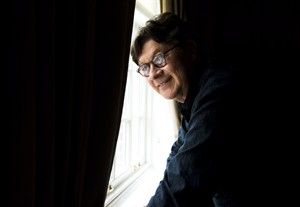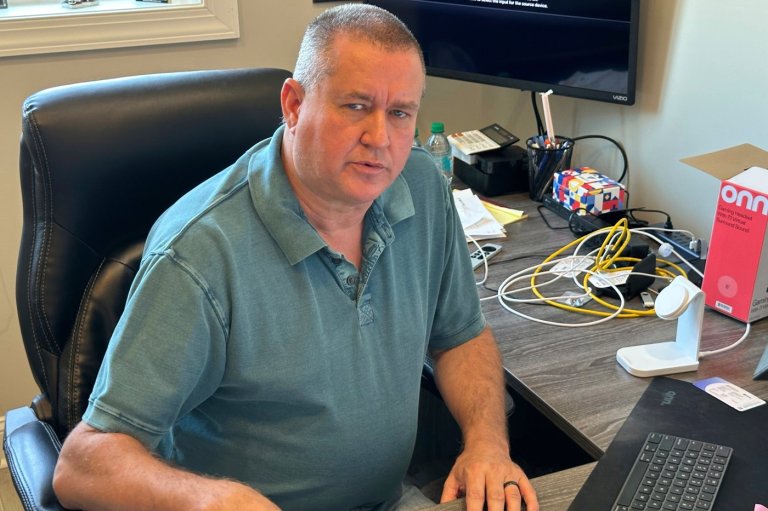
The Band’s Robbie Robertson pens book on musical heroes, as well as a memoir
TORONTO – The Band’s legendary guitarist Robbie Robertson has co-authored a new book geared toward introducing young people to the most influential artists of yore, but there’s at least one weighty omission from the glossy tome: the Band.
His collaborator Jim Guerinot said “Legends, Icons & Rebels: Music That Changed the World” (Tundra Books) originally included an entry for the mostly Canadian Americana innovators — whose master musicianship and classification-defying signature stew of country, blues, R&B and rock set an inimitable example for bands who followed — but Robertson vetoed his own inclusion over his partner’s objections.
“I made them take it out of the book,” Robertson said during an interview this week in Toronto, his co-writer by his side. “I just didn’t want to be a distraction. I didn’t want to be blowing my own horn in this thing. I didn’t feel comfortable with that.
“I understood perfectly that the Band was one of the biggest examples of combining music into a whole new flavour … we did that more than anybody else. And I said, ‘No, I just don’t feel comfortable with this.’ Because it just felt like: ‘Hey, here’s the greatest recording artists of all time, the music that changed the world, and I made sure I was in there.’
“I just didn’t want that weighing over me.”
It wasn’t the only heated argument over which artists were to be included in the gorgeously illustrated book, which hits stores this week.
The book includes profiles of 27 of the most influential artists of all time, including Aretha Franklin, the Beatles, Bob Marley, Buddy Holly, Ray Charles, Little Richard, the Beach Boys, Sam Cooke, Stevie Wonder, Bob Dylan and Joni Mitchell (the sole Canadian artist to merit inclusion), with pithy but fascinating personal anecdotes about each artist from Robertson sketched in the margins.
Among the snubs singled out as particularly painful by the authors themselves? The Rolling Stones, Sly and the Family Stone, Roy Orbison, Simon and Garfunkel and David Bowie.
Well, they hope to someday issue a Part Two. The book includes two hit-stuffed CDs with tracks from every featured artist (when it’s pointed out that securing the rights to all the songs must have been a headache, Robertson and his co-conspirator simply nod their heads wearily in agreement).
It’s intended as both an introductory tool for children and young adults unfamiliar with the bedrock-building legends of music’s past as well as an educational tool for adults who might even fancy themselves experts on the artists covered.
The idea for the book came from Robertson’s son Sebastian, a co-writer on the project (along with music executive Jared Levine). Sebastian had been working part-time with children and was growing tired of the repetitive tunes he was forced to endure — “little ‘dunt diddy dunt dee dun dee dun’ kind of music,” his father describes — and found that music by such all-time greats as Johnny Cash and James Brown actually elicited a more enthusiastic response.
That got the gears turning, Robbie Robertson said.
“We are told and sold the fact that that’s what you play for young children,” he said. “Some of it is cute and adorable and timeless in its own way too — some of those Disney songs. … But a lot of it is, to be truthful, a bit condescending. It’s dumbed down. So you get ‘Barney’ music or whatever it is.
“(Sebastian) grew up in a household, him and his sisters, that there was great music playing all the time. So it was, he was saying, other people haven’t had that opportunity. Somebody should help them have that opportunity.”
Adult readers will likely delight in Robertson’s asides. The 70-year-old has long been renowned for his off-kilter guitar playing and evocative storytelling, and the latter factor is on full display here even in one-paragraph diversions about his musical heroes.
Sometimes he shares his brief brushes with icons of a prior generation — his quick conversation with Buddy Holly as a 14-year-old, for instance, where the bespectacled legend explained his powerful guitar sound by saying that he “blew a speaker and decided not to get it fixed” — and other times he casts himself as another mere fan, star-struck at a prodigious talent on display (such as his anecdote about seeing James Brown at the Apollo Theater in 1966, where he says he and Levon Helm were the only two white people in the audience).
Of course, many of the acts covered in the book were peers of Robertson’s, so he has more intimate stories to share. Of the Beatles, for example, he notes that George Harrison was such an ardent admirer of the Band’s that he invited Robertson out to listen to an embryonic version of “Abbey Road” in the studio.
But Robertson says now that he knew of the Beatles’ interest in his group’s music even before that.
“When ‘Music From Big Pink’ came out, it had a big impact on the music community and songwriters and all kinds of people,” Robertson says of the Band’s classic 1968 debut, noting that Eric Clapton and George Harrison both had acetate discs of the album.
“The Beatles were on a TV show and they were doing ‘Hey Jude,’ and at the end of it — that whole outro thing, ‘naaa naaa naaa na-na-na-na!’ — Paul McCartney started singing ‘take a load off Fanny.’ So right away, you know something’s happening.”
The Band’s history with the Beatles doesn’t stop there.
“George Harrison came to visit us in Woodstock,” Robertson says of the New York town where he and his Band-mates once shared a house. “He said, ‘I gotta find out how this thing works with you guys.’ … Paul McCartney and I still tell stories from that period.”
One of Robertson and the Band’s more well-known associations was with Bob Dylan. The members of the Band — all of whom hailed from southwestern Ontario with the exception of beloved singer-drummer Helm, who died last year — backed Dylan on the loose 1967 sessions that eventually became “The Basement Tapes” and Robertson’s weaving guitar work further distinguished Dylan’s 1966 classic “Blonde on Blonde.”
But prior to that, a 21-year-old Robertson accompanied Dylan on his first “electric” tour, when audiences (and the folk establishment) reacted with hostility to the slurring rebel poet ditching his acoustic guitar in favour of the charged new sound.
“People booed us all over the world,” recalled Robertson. “Everywhere, every night, we went out, people booed and threw stuff at the stage. And we would go back to the hotel after these concerts, and nobody wants to go and hang out with the people that are being booed that much after the show. So it would just be us.
“And we would record some of the shows … and we’d listen to the music, and we were saying: ‘You know, this isn’t bad. This isn’t boo-worthy.’ And it was getting better and better. Finally, we got to a place where we were saying, ‘You know what? We’re right and they’re wrong. The rest of the world is wrong and we’re right,’ and we just believed time would tell. And it did.”
One might suppose that experiencing such malevolence on a routine basis would have a traumatic effect on someone as young as Robertson at the time, but he insists that wasn’t the case.
“Sometimes when you’re young, these things just roll off your back,” said Robertson. “It doesn’t affect you that much. You just think, ‘wow, you know, so what?’ ‘Cause you’re young and stupid.”
Even just putting the book together yielded good stories. A few months ago, Guerinot and Robertson travelled to St. Louis to visit with Chuck Berry, the father of rock and roll. Robertson says that he and Berry — by legend an occasionally frosty sort, particularly toward the rock musicians who profited off the sound he invented — have a “great relationship,” even as he acknowledges: “I’ve had my situations with Chuck Berry, too.”
During their visit, Robertson and Guerinot tried to jog Berry’s memory of a certain performer by showing the legendary rocker an iPhone photo.
“And he said, ‘Can my phone do that?’” Guerinot recalled. “All of a sudden, I’m sitting next to Chuck giving him an iPhone tutorial. I was just like, ‘This is the greatest thing in life.’”
Added Robertson of the 86-year-old “Johnny B. Goode” howler: “I think the world of Chuck Berry. … And he still gets up and performs. He can’t hear, but he still sings those songs.”
Given Robertson’s obviously extensive inventory of untold rock and roll yarns, “Legends, Icons & Rebels” offers a tantalizing glimpse of what a true memoir from the rocker might look like.
Good news, then. Robertson has been penning an autobiography for years, and — his eyes lighting up at the mention of it — is sufficiently enthusiastic about the work that he makes no effort to manage expectations.
“It’s pretty extraordinary because the more I’m writing it, the more I’m realizing that I’ve got a few stories to tell,” Robertson says effusively but wouldn’t guess at a release date for the project. “It’s really working out great. One of the editors that I’m working with, I was with last night, and she just read the first seven chapters of it and it blew her mind.
“So that’s exciting for me to think, well, I’m … trying to do something really special with that, and she says it’s unlike anything else she’s ever read. And she’s read some of these music memoirs and everything, and she says it is miles away from anything anyone else has done. And I haven’t read them — on purpose I haven’t read them.
“So that’s gratifying to hear.”
Join the Conversation!
Want to share your thoughts, add context, or connect with others in your community? Create a free account to comment on stories, ask questions, and join meaningful discussions on our new site.


















Leave a Reply
You must be logged in to post a comment.